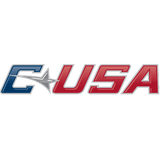
Final evaluation period brings coaches, recruits to Vegas
LAS VEGAS (AP) Northern Arizona coach Jack Murphy followed the directions turn by turn as he worked his way from a high school north of Las Vegas to one to the south.
The GPS said his fourth stop of the day was just around the corner, but when Murphy arrived at the turn, the road was closed because of construction.
His destination in sight, he made a split-second decision. Murphy still had at least three more games to see, then catch a red-eye flight to Toronto for a one-day trip before returning to Las Vegas.
The distance, no matter how short, was now too long.
''I'm going to have to skip it,'' Murphy said as he turned his car around. ''I've got to pack before heading to the next game.''
Time crunches and decisions on the fly come with the territory for college basketball coaches during the live recruiting periods.
During the last week of July, which serves as the final of three evaluation periods during the month, coaches from most, if not all, 351 Division I men's basketball programs descend upon Sin City to watch the nation's top recruits.
Dozens of tournaments play simultaneously at close to 100 sites across the city, with roughly 1,200 teams competing in high school gyms, performing arts centers and the Cashman Center, a 98,000-square foot exhibit hall operated by the Las Vegas Convention and Visitors Authority.
At many of the high schools, the floor was split so two games could be played simultaneously. The Cashman Center was split into seven courts, including a showcase court in the center with extra bleachers for the bigger games.
The marquee game was on opening night, when South Carolina's Zion Williamson and SC Supreme faced Southern California's LaMelo Ball and Big Baller Brand in the Adidas Uprising summer championships.
More than 3,000 people crowded around the court, including several NBA players, and 80,000 or so watched a Facebook live stream of the showdown between top-10 recruits. More than 1,000 people were turned away - LeBron James reportedly among them - and the Las Vegas Police Department was called in to help control the crowd.
''It's amazing how big this has become,'' Indiana coach Archie Miller said.
The arduous recruiting process starts with identifying potential recruits, often before they're in high school. Coaches track their progress, reach out to the ones they're interested in and watch them play as often as possible.
The tournaments in Las Vegas offer a chance to see and be seen, giving the players an opportunity to show what they can do against some of the nation's best players. Every coach has specific needs and is not only looking to fill spots in his next recruiting class, but to build classes three and four years down the road.
Coaches head into evaluation week with a list of players they're actively trying to sign, recruits who may have caught an assistant's eye or a younger player who is on their radar.
Figuring out where to go when is like trying to solve a puzzle with pieces that don't always fit. With players spread out on courts in all reaches of the city and schedules that sometimes change by the minute, it's a matter of prioritizing and figuring out how to squeeze in as many games as possible without missing someone.
In some cases, coaches just want a look at a potential recruit to see how he plays against good competition or if he'll be a good fit for their program.
Murphy went to watch a young point guard who caught the attention of an assistant the previous week, but he left at halftime after the kid missed three 3-pointers, two free throws and had a couple of turnovers.
When a coach is gunning hard for a recruit, he will find a prominent seat to be seen not only by the player but his parents as well. Sometimes the coaches will bring assistants with them in a show of strong interest, as Rice's Scott Pera did with three assistants while watching a point guard he was trying to woo to South Texas.
''You've got to let them know you're interested,'' said Pera, named Rice's head coach in March. ''Sometimes that means having four people in the front row.''
When top-tier recruits like Williamson, Arizona's Marvin Bagley III or high schooler Bol Bol - son of former NBA center Manute Bol - are on the court, it's usually the blue-blood coaches in the stands, like Kentucky's John Calipari, Kansas' Bill Self or North Carolina's Roy Williams.
Coaches at smaller programs like Murphy at NAU and Sacramento State's Brian Katz know they don't have much of a shot at the big-name players, so they look for players who have fewer stars in their recruiting rankings or have been overlooked for whatever reason.
''It is a little tougher at our level, but we find players who fit our needs,'' said Katz, entering his 10th season at Sac State. ''Everyone is here for the same reason.''
---
More AP college basketball: www.collegebasketball.ap.org and https://twitter.com/AP-Top25
